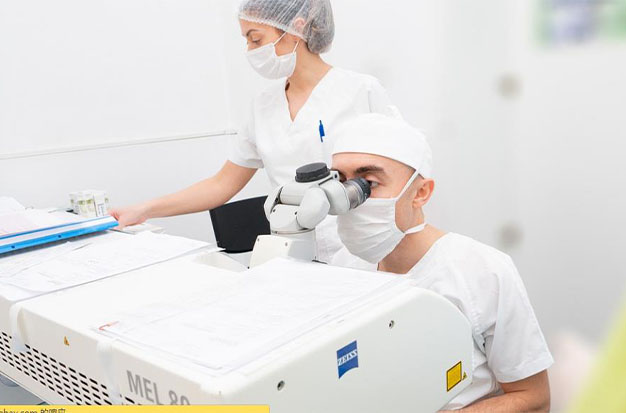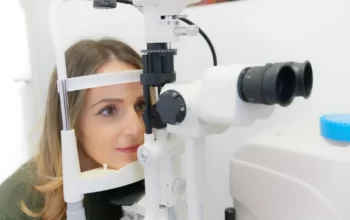
The average time for cataract surgery is ten minutes or less, and the recovery period is manageable.
Many of our cataract patients are curious about the potential for regrowth following surgery. Actually, cataracts cannot come back after surgery because your natural lens is totally removed during the procedure. You should be informed that up to 50% of individuals experience a condition called “secondary cataract” or “after-cataract” after having their cataracts removed.
It’s crucial to remember that the majority of individuals have minimal or no side effects from cataract surgery. Continue reading for more details on cataracts and cataract surgery.
What Is A Cataract?
The natural lens of the eye gets opacified (clouded), and cataracts commonly affect those over the age of 55. Smoking and extensive sun exposure, in addition to age and prior eye injuries, can raise a person’s risk of developing cataracts. You can encounter symptoms including glare, impaired vision, and difficulty reading if you have cataracts. The majority of the time, cataracts proceed quite slowly and don’t require immediate surgery. Unfortunately, cataracts cannot be stopped from progressing, and surgery is the only available therapy option. Please get in touch with our staff to make an appointment with a Louisiana eye specialist if you believe you may have cataracts or are having vision issues.
How Does Surgery Treat Cataracts?
The clouded natural lens is removed during cataract surgery and replaced with an intraocular lens (IOL). The IOL is a transparent plastic implant with the focusing ability to take the role of the eye’s natural lens. It is a long-lasting lens substitute that can really enhance vision. IOLs don’t need special maintenance, and cataracts can’t form on them. If both eyes require surgery, the procedures will probably be performed separately to give the first eye time to recover before the second one.
Although each patient’s recovery is unique, most people recover within a few weeks. Up to six months after surgery, our doctor may arrange follow-up appointments as necessary. You might require a prescription in order to read or perform close work, depending on the kind of IOL your doctor uses. To keep track of your eye health, you still need to have regular eye and vision exams.
What Are Secondary Cataracts?
If you develop cataracts and undergo cataract surgery, there is a small risk that you may develop another condition called secondary cataracts or after-cataracts.
This condition is known medically as posterior capsular opacification (PCO). This happens when the membrane around the lens capsule, which was left in place during cataract surgery and now houses the intraocular lens (IOL), develops a cloudy appearance and starts to impair vision similar to a cataract. On the back of the capsule, proteins start to alter and new cells start to proliferate, obstructing your field of view.
There are two basic types of secondary cataracts: pearl and fibrous. Pearl PCO consists of normally differentiated LECs in the equatorial lens regions, whereas fibrous PCO involves abnormal propagation of LECs. A combination of these can be seen in some cases, but the pearl is responsible for the majority of vision loss related to secondary cataracts.

Can Cataracts Come Back After Surgery?
We must first comprehend what cataracts are, how they form, and how cataract surgery functions in order to answer the question of whether a patient can develop cataracts once more following a successful cataract removal procedure.
The most common cause of cataracts is aging naturally. 50% of persons have some degree of cataract development by the age of 80. Other potential contributing variables include accidents, heredity, sunshine, alcohol, smoking, and some medications.
The cataract-damaged lens is entirely removed from the eye during cataract surgery and is replaced with an intraocular lens implant, an artificial lens. This brand-new artificial lens won’t get cataracts. This guarantees that the patient will never experience another cataract in that eye. The patient will be free of cataracts for life if both eyes are successfully operated on.
Although they are not the same, some people mistake “secondary cataracts” for the recurrence of cataracts. As a result of cataract surgery, secondary cataracts often referred to as posterior capsule opacification can occasionally appear months or years later.
The thin membrane known as the eye capsule, which holds the lens in place, becomes clouded in secondary cataracts rather than the eye lens itself. Proteins that clump together on the capsule’s backside produce a thin layer of tissue that resembles scar tissue and symptoms that are very similar to cataracts. Up to 20% of people who have cataract removal surgery experience this.
Thankfully, subsequent cataract treatment just needs one office visit and is both straightforward and painless. The ophthalmologist makes a tiny hole in the lens capsule’s backside during the appointment using a specialized laser. This restores regular visual function by allowing lights to travel through the retina unhindered once more. Secondary cataracts are exceedingly unlikely to ever require further treatment after this correction.
Why Do People Get Secondary Cataracts?
When eye proteins jam up the natural lens, cataracts develop. It develops gradually over time and typically shows itself in later years of life (although cataracts can form in younger people as well). As a result, the lens thickens and opacifies, a process called opacification. When this happens, it might affect your vision, causing blurriness and clouding, and if it’s not fixed, it could result in blindness for good.
The natural lens is removed during cataract surgery and replaced with an artificial lens, rendering the cataract permanently fixed. But there is a disease that can develop after surgery that looks just like a cataract. Posterior Capsular Opacification is the term for this.
To understand what this is and the available treatment we need to delve a little into the procedure of cataract removal, recovery period, and cataract surgery aftercare
How Do You Treat a Secondary Cataract?
Fortunately, treatment is not as complicated as removing primary cataracts if secondary cataracts have developed. Simply creating a hole in the lens capsule’s center with a laser will allow light to pass through. The YAG laser capsulotomy procedure is what causes this.
Asking about your secondary cataract risks and potential prophylactic measures is a smart idea if you are getting cataract surgery. In order to continue to enjoy your newly restored clear vision after cataract surgery, it’s crucial to have regular post-surgical checkups to make sure that secondary cataracts are not developing.
Conclusion
You may have PCO if you previously underwent cataract surgery and now it appears that you may be developing a cataract once more. Find out if this kind of laser is a possibility for you by seeing an ophthalmologist.
If you have any other queries regarding cataract surgery, kindly leave a remark.



